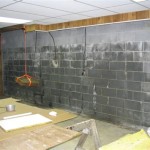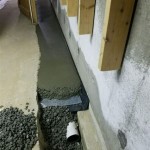Single Story House with Basement Plans: Essential Considerations
Single-story houses with basements offer a unique combination of convenience and space, making them a popular choice for families and individuals alike. Whether you're considering building a new home or remodeling an existing one, understanding the key aspects of single-story house with basement plans is crucial to ensure a successful outcome.
1. Basement Considerations
The basement is a significant part of a single-story house with basement plans. Here are some factors to consider:
- Purpose: Determine the primary purpose of your basement, whether it will be used for storage, recreation, or living space.
- Height: Basement height is important for both comfort and functionality. Aim for a height of at least 8 feet to allow for adequate headroom and space for furniture or equipment.
- Natural Light: If possible, incorporate windows or a walkout to provide natural light to the basement. This will create a more inviting and comfortable space.
- Egress: Code requirements typically mandate multiple means of egress from the basement, such as a door or a window with a large enough opening.
- Moisture Control: Basements are prone to moisture issues. Ensure that proper waterproofing and drainage systems are in place to prevent water damage.
2. Floor Plan
The floor plan of a single-story house with basement should be designed to maximize space and functionality:
- Main Level: The main level typically includes the living room, dining room, kitchen, bedrooms, and bathrooms. Consider the flow between these spaces and the connection to the outdoors.
- Basement Level: The basement level can accommodate additional bedrooms, a family room, a home office, or a storage area. Plan the layout to create a comfortable and functional living space.
- Staircase Location: The location of the staircase is important for both functionality and aesthetics. Choose a central location that provides easy access to both levels.
- Storage Space: Utilize the basement for additional storage space, such as closets or built-in shelves.
3. Building Materials
The choice of building materials is crucial for the longevity and energy efficiency of your home:
- Foundation: The foundation should be strong enough to support the weight of the house and protect it from the elements.
- Exterior Walls: Consider using insulated exterior walls to improve energy efficiency. Siding materials can range from vinyl to brick.
- Roofing: Choose a roofing material that is durable, weather-resistant, and complements the architectural style of your home.
- Windows and Doors: Energy-efficient windows and doors will help reduce heating and cooling costs.
4. Energy Efficiency
Incorporating energy-efficient features into your single-story house with basement plans can save you money on utilities:
- Insulation: Adequate insulation in the walls, attic, and basement will help maintain a comfortable indoor temperature.
- Energy Star Appliances: Choose appliances with the Energy Star label to reduce energy consumption.
- Solar Panels: Consider installing solar panels to supplement your energy needs and reduce your carbon footprint.
- Water-Saving Fixtures: Install low-flow toilets and faucets to conserve water.
5. Cost Considerations
Building or remodeling a single-story house with basement plans involves significant costs:
- Construction Costs: The cost of materials, labor, and permits can vary depending on the size, complexity, and location of your home.
- Excavation Costs: The cost of excavating a basement can be substantial, especially if the soil conditions require specialized equipment.
- Finishing Costs: Finishing the basement into a habitable space involves additional costs for flooring, drywall, and electrical work.
- Maintenance Costs: Single-story houses with basements may require more maintenance, such as waterproofing and moisture control measures.
Conclusion
Single-story house with basement plans offer a range of benefits, from additional space to energy efficiency. By carefully considering the essential aspects discussed above, you can create a home that meets your needs and provides a comfortable, functional living environment. Remember to consult with architects, engineers, and contractors to ensure a successful project.

Single Floor House Plans With Basement

2 813 Sqft One Story House With Basement Pryor Blue Ridge Custom Homes Llc

Simple House Floor Plans 3 Bedroom 1 Story With Basement Home Design

House Plan 80801 Ranch Style With 2454 Sq Ft 3 Bed 2 Bath 1

Dream 1 Story House With Basement Floor Plans Designs

Country One Story House Plan With Open Concept And Fabulous Deck 1145

10 Gorgeous Ranch House Plans Ideas

House Plans With Basements And Lower Living Areas

House Plans With Finished Basement Home Floor

Photo Gallery Of Plan 41841







